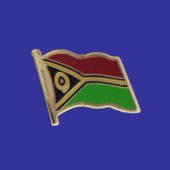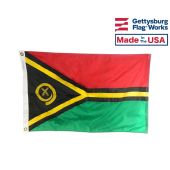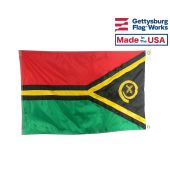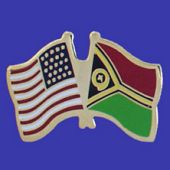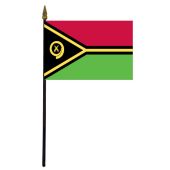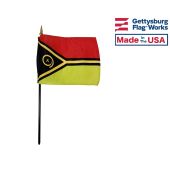Flag of Vanuatu
Flag of Vanuatu For Sale
The history of the Vanuatu flag stretches back to the time when it was jointly managed by France and the British Empire. The flag of Vanuatu changed over time as it became a colony of Britain, and it eventually developed into the modern flag that reflects its native heritage and status as an independent nation in its own right.
The flag of Vanuatu was adopted on February 13, 1980.
When the Vanua'aku Party led the country to independence as Vanuatu in 1980, the colors of the party flag - red, green, black and yellow - were chosen to be the basis for the national flag. A parliamentary committee chose the final design based on submissions from local artists.
The green represents the richness of the islands, the red is symbolic of the blood of boars and men, and the black of the ni-Vanuatu people. Vanuatu's Prime Minister requested the inclusion of yellow and black fimbriations to make the black stand out. The yellow Y-shape represents the light of the Gospel going through the pattern of the islands in the Pacific Ocean (Vanuatu is approximately 90% Christian).
The emblem in the black is a boar's tusk - the symbol of prosperity worn as a pendant on the islands - along with two leaves of the local namele fern. The leaves are supposed to be a token of peace, and their 39 fronds represent the 39 members of Vanuatu's legislative assembly.
- Capital of Vanuatu: Port-Vila
- Area of Vanuatu: 12,200 sq. km
- Languages used in Vanuatu: Local languages, pidgin, English, French
- Religions in Vanuatu: Presbyterian, Anglican, Roman Catholic, Seventh-Day Adventist, other Christian, indigenous beliefs
Colors and Symbolism of the Flag of Vanuatu
The flag of Vanuatu displays two horizontal of red and green with a black triangle along the hoist that extends to divide the two bands. The triangle has a yellow border and contains a yellow emblem of two crossed ferns surrounded by curling tusk. The green band represents the natural richness of the nation's islands, while the red band represents the blood of the citizens and the boars that live in Vanuatu. The black triangle and stripe represent the people themselves, while the gold color serves to make the black stand out from the rest of the flag. The gold also represents the Christian religion, which is very common in the country. The emblem's tusk is a traditional symbol of good luck, while the ferns represent peace and each leaf on them represents one member of the Parliament of Vanuatu.
History of the Vanuatu Flag
The first Vanuatu flag was that of the Anglo-French Joint Naval Commission, which governed the islands together as a neutral territory. The flag was used from 1887-1906, when it was replaced by a British colonial flag. It followed the same pattern as other colonial flags, which a blue field that displayed the Union Jack in the canton and the colonial seal along the fly. The seal was a white disc with a Tudor crown inside it and the colony's name written around the crown. The colonial flag changed in 1953, when the Tudor crown was replaced with St. Edward's Crown.
Vanuatu used different flags when it competed in international sporting events. These flags emphasized the nation's links to both Britain and France. Vanuatu used such flags at the South Pacific Games of 1963 and 1966, although it used slightly different versions of the flag at each event.
Vanuatu became independent of all colonial powers and adopted a new flag in 1980. The flag has not changed since it was first adopted as a symbol of the new nation and remains popular to this day.
